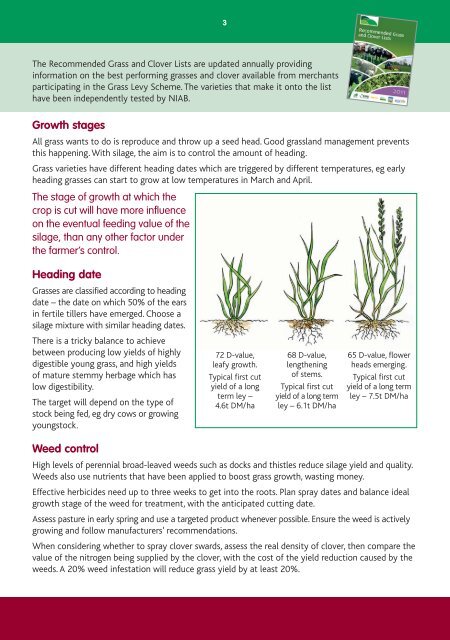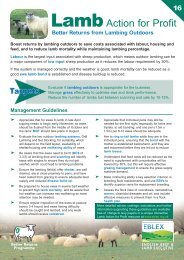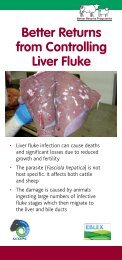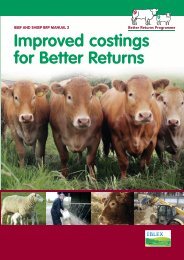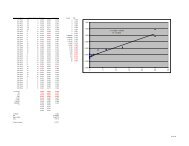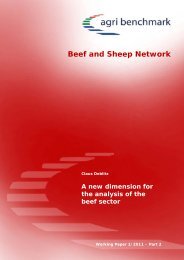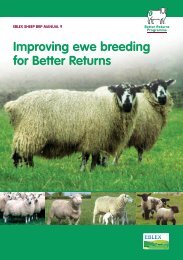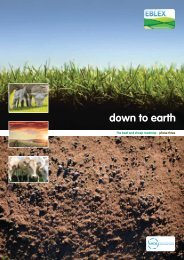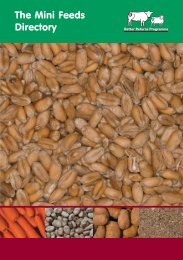Making Grass Silage for Better Returns - Eblex
Making Grass Silage for Better Returns - Eblex
Making Grass Silage for Better Returns - Eblex
Create successful ePaper yourself
Turn your PDF publications into a flip-book with our unique Google optimized e-Paper software.
The Recommended <strong>Grass</strong> and Clover Lists are updated annually providing<br />
in<strong>for</strong>mation on the best per<strong>for</strong>ming grasses and clover available from merchants<br />
participating in the <strong>Grass</strong> Levy Scheme. The varieties that make it onto the list<br />
have been independently tested by NIAB.<br />
Growth stages<br />
All grass wants to do is reproduce and throw up a seed head. Good grassland management prevents<br />
this happening. With silage, the aim is to control the amount of heading.<br />
<strong>Grass</strong> varieties have different heading dates which are triggered by different temperatures, eg early<br />
heading grasses can start to grow at low temperatures in March and April.<br />
The stage of growth at which the<br />
crop is cut will have more influence<br />
on the eventual feeding value of the<br />
silage, than any other factor under<br />
the farmer’s control.<br />
Heading date<br />
<strong>Grass</strong>es are classified according to heading<br />
date – the date on which 50% of the ears<br />
in fertile tillers have emerged. Choose a<br />
silage mixture with similar heading dates.<br />
There is a tricky balance to achieve<br />
between producing low yields of highly<br />
digestible young grass, and high yields<br />
of mature stemmy herbage which has<br />
low digestibility.<br />
The target will depend on the type of<br />
stock being fed, eg dry cows or growing<br />
youngstock.<br />
3<br />
72 D-value,<br />
leafy growth.<br />
Typical first cut<br />
yield of a long<br />
term ley –<br />
4.6t DM/ha<br />
68 D-value,<br />
lengthening<br />
of stems.<br />
Typical first cut<br />
yield of a long term<br />
ley – 6.1t DM/ha<br />
65 D-value, flower<br />
heads emerging.<br />
Typical first cut<br />
yield of a long term<br />
ley – 7.5t DM/ha<br />
Weed control<br />
High levels of perennial broad-leaved weeds such as docks and thistles reduce silage yield and quality.<br />
Weeds also use nutrients that have been applied to boost grass growth, wasting money.<br />
Effective herbicides need up to three weeks to get into the roots. Plan spray dates and balance ideal<br />
growth stage of the weed <strong>for</strong> treatment, with the anticipated cutting date.<br />
Assess pasture in early spring and use a targeted product whenever possible. Ensure the weed is actively<br />
growing and follow manufacturers’ recommendations.<br />
When considering whether to spray clover swards, assess the real density of clover, then compare the<br />
value of the nitrogen being supplied by the clover, with the cost of the yield reduction caused by the<br />
weeds. A 20% weed infestation will reduce grass yield by at least 20%.


